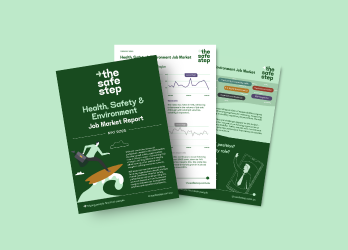How to be a caring leader who gets amazing results
Page Published Date:
August 9, 2021
A culture of care is key for high performance
The pandemic has turbo-charged digital disruption meaning organisations have had to learn and adjust at a rapid pace.
Fostering care and connection is paramount. Teams must feel properly supported to successfully navigate unprecedented change.
High performance teams are best created by taking a humanistic approach. This means creating a safe psychological environment where your can flourish and be the best that they can be.
If just one person is hampered by unhappiness or uncertainty, then the whole team, in fact the whole organisation, can be compromised.
Qualities of caring leaders
Caring leaders tend to be humble. They share the credit and talk about team members, not staff or employees. Believe the whole is bigger than the sum of it’s parts.
Empathy is another key trait in a caring leader. Many high-performance CEOs are personally involved in wellbeing teams within their organisations. Amanda Yeates, Deputy Director General. Dept Main Roads and Transport QLD is so passionate about the wellbeing of her team members she chose to become the Chair of their Wellbeing Committee.
In a recent Next Step webinar, Powerful Team Performance Insights From Caring CEOs, Graeme Cowan identified three key areas of 'care' that leaders needed to invest in. Leaders must care for themselves (this is easier said than done), their crew and those in the ‘red zone’.
Ultimately, Graeme believes, people need to know that a supervisior or someone in their workplace appreciates and supports them.
Case study: ‘People Caring for People’ - The Ramsay Way
Pat Grier grew Ramsay Healthcare from 12 to more than 100 hospitals during his 20-year tenure. Pat and the Ramsay team developed a very special culture called the Ramsay Way.
By focusing on People not Revenue, he improved staff satisfaction, transformed the industry, reduced injury rates and over time and created a business that outperformed the ASX 15x in total shareholder returns. Commercial success came from valuing strong relationships, striving to conslantly improve and through sustainable growth.
Pat Grier’s top tips for creating a caring culture:
- The 80% rule. Focus on the best 80% (not the worst 20%) of a person. “It’s what you concentrate on, that you become good at,” says Grier. “We look for goodness, rather than gaps.”
- Have a vision. This brings everyone together and maps-out the way forward. Ramsay Health Care came up with a slogan everyone could relate to: ‘People Caring for People.’
- Focus on people. By making Ramsay’s people the product, the organisation got better and better at helping each other. “It’s amazing to see how this flourished,” says Grier.
- Culture takes time. Don’t expect a culture of care to develop overnight. Use tough times and channel them into growth. Long term investment is key.
- ‘We’ organisation. Talk about ‘we’, not ‘I’ to recognise everyone’s efforts and make people feel a part of something bigger.
- No fear. Rotten apples can demotivate others and should be encouraged to move on to an environment that better suits them.
3 questions caring leaders should ask
R U OK? Director Graeme Cowan helps future-ready leaders build more caring and resilient teams. According to Graeme, there are three questions caring leaders should ask all the time:
- Do we feel connected? Do team members feel like they have each other’s backs and belong.
- Do we feel safe? Can your people be themselves at work? Are they able to try new things safe in the knowledge that they won’t be punished or sacrificed.
- Do we share a future? Can your teams work together to co-create our future.
"If we get this right, we get growth, resilience and reduced risk," says Graeme.
Building high-performance teams
Pat Grier, the ever-so-humble CEO, never proclaimd to be the smartest person in the room. For him it is far more important to be surrounded by great people. In these VUCA times it is proving to be even more essential that leaders surround themselves with the best team they can.
The HR and HSE recruitment market is experiencing a significant upswing in demand to respond to the VUCA challenges ahead (volatility, uncertainty, complexity, and ambiguity). It is therefore even more critical organisations hire the right talent to meet these opportunities head on.
If you are looking to for HR & HSE talent or thinking of exploring career opportunities come and speak to the specialists. We have 23 years understanding organizational needs and matching the best candidates.
Jo Skipper is Managing Director of The Next Step. She partners with the executive HR community to source exceptional talent across contract and permanent positions. Jo has a deep understanding of, and interest in, change management and total reward specialisations.
Author: Jo Skipper Date published : 09/08/2021




